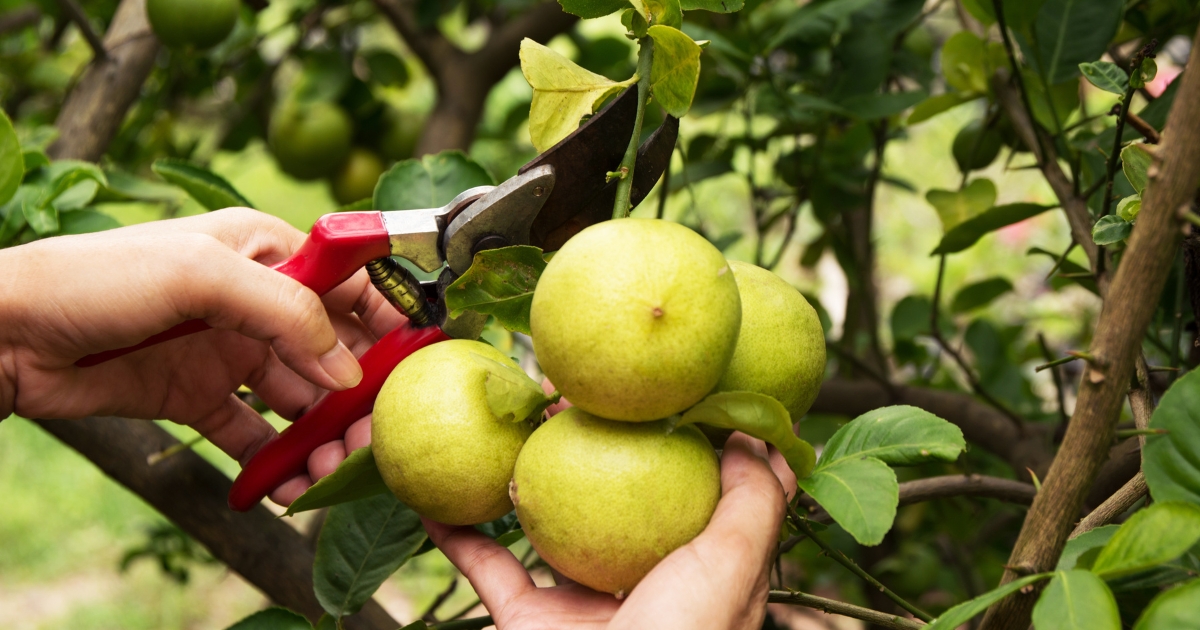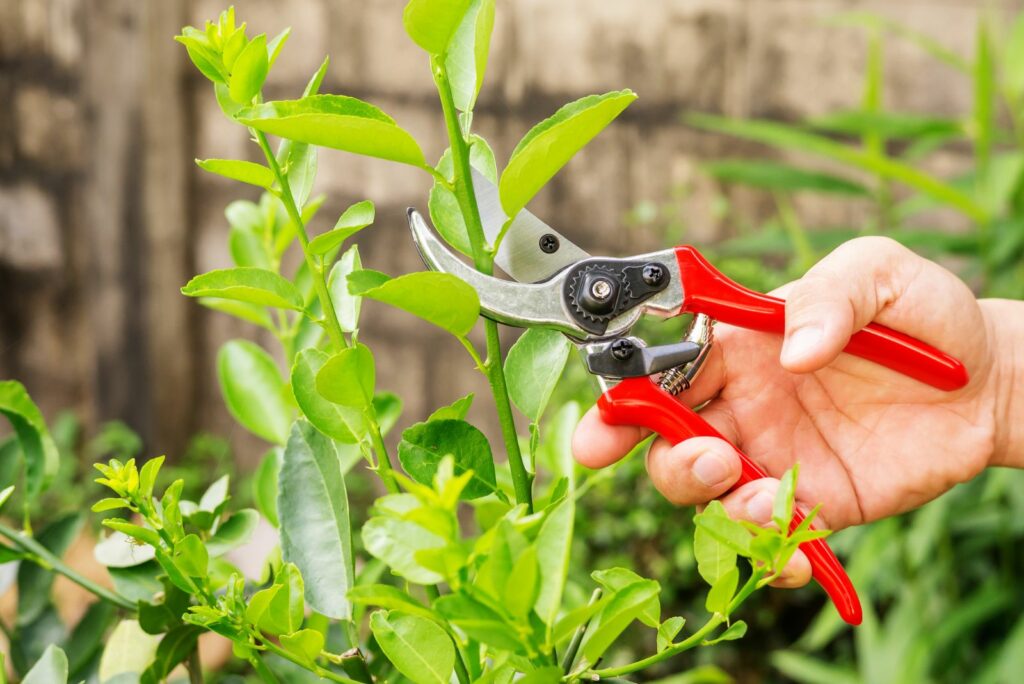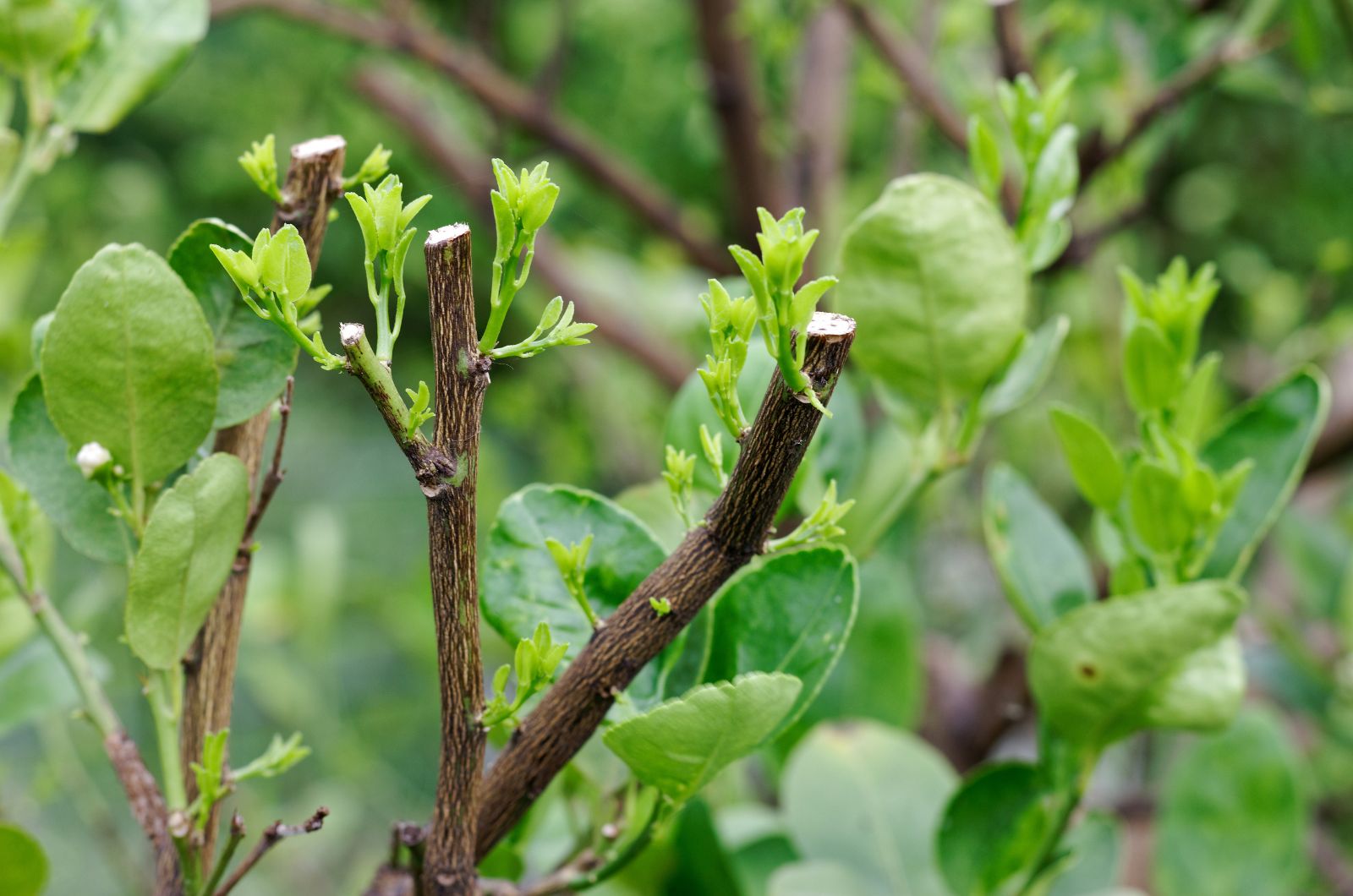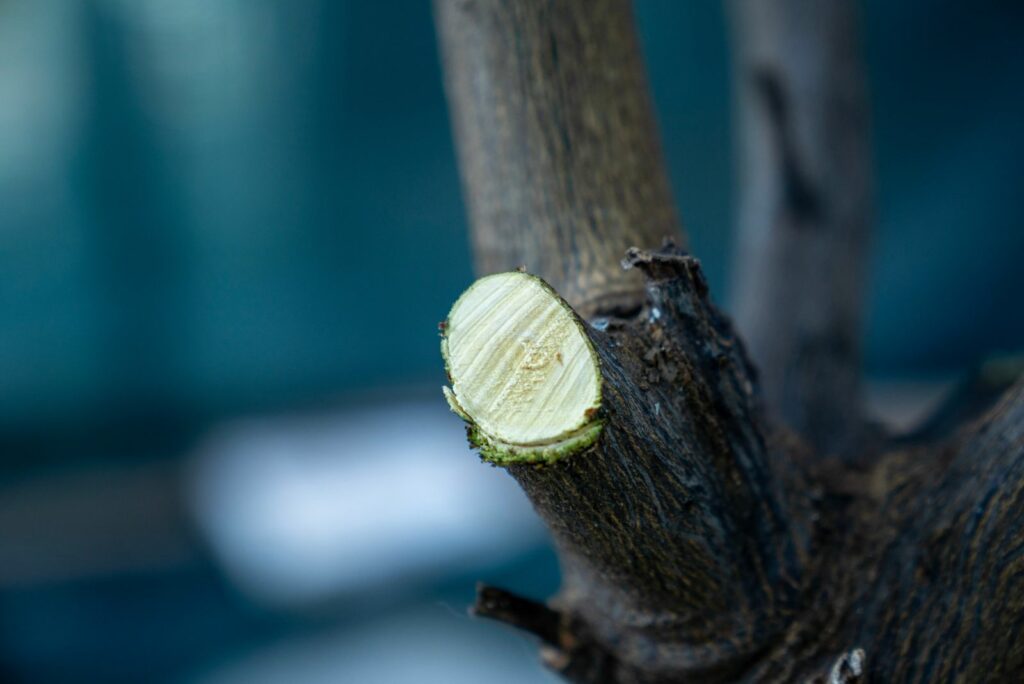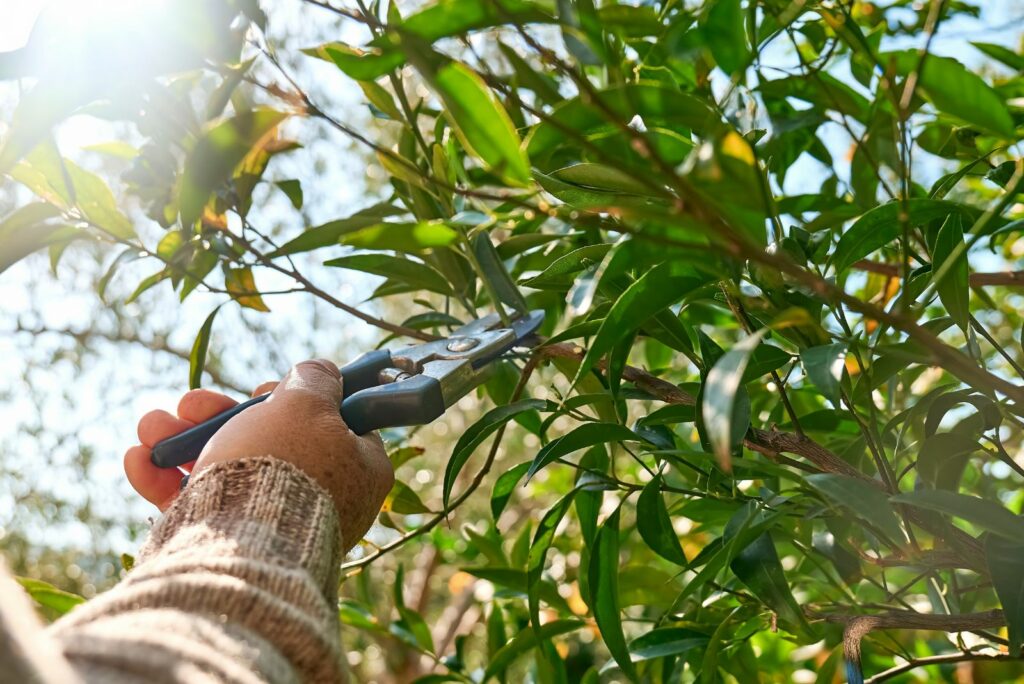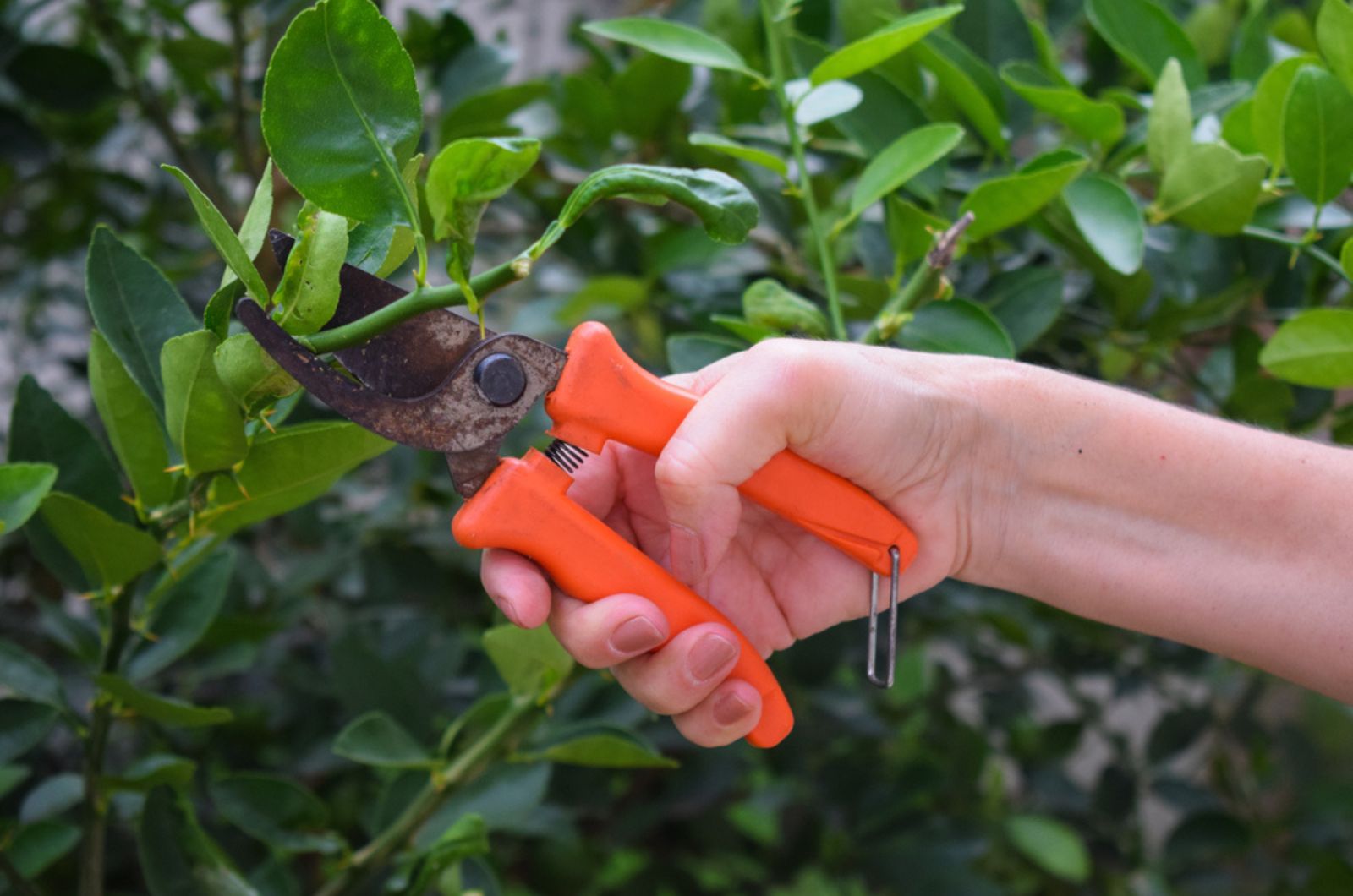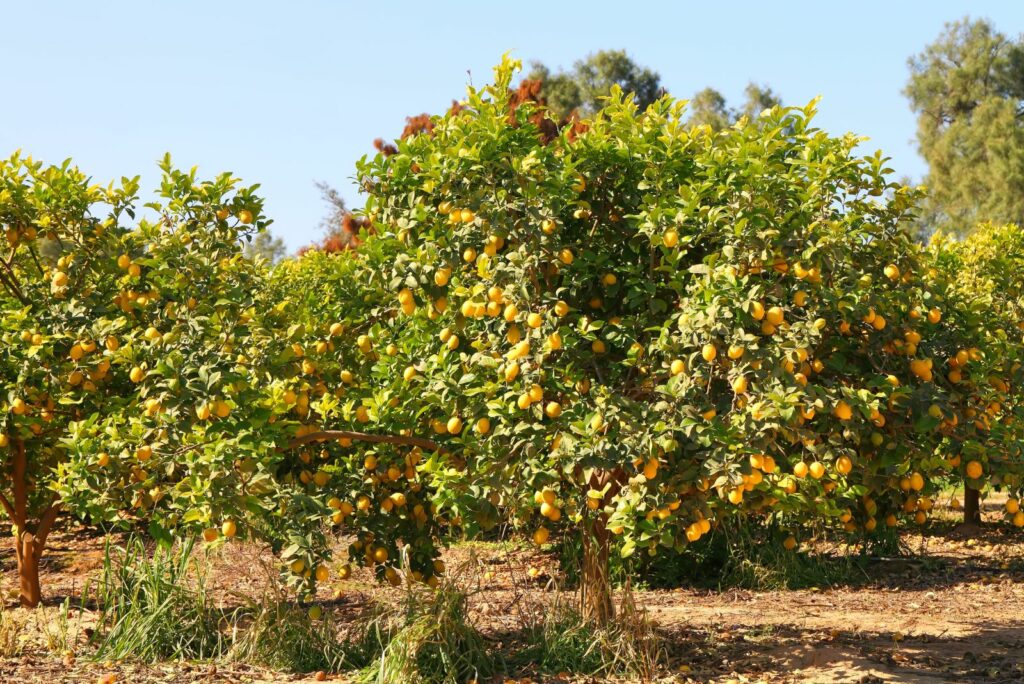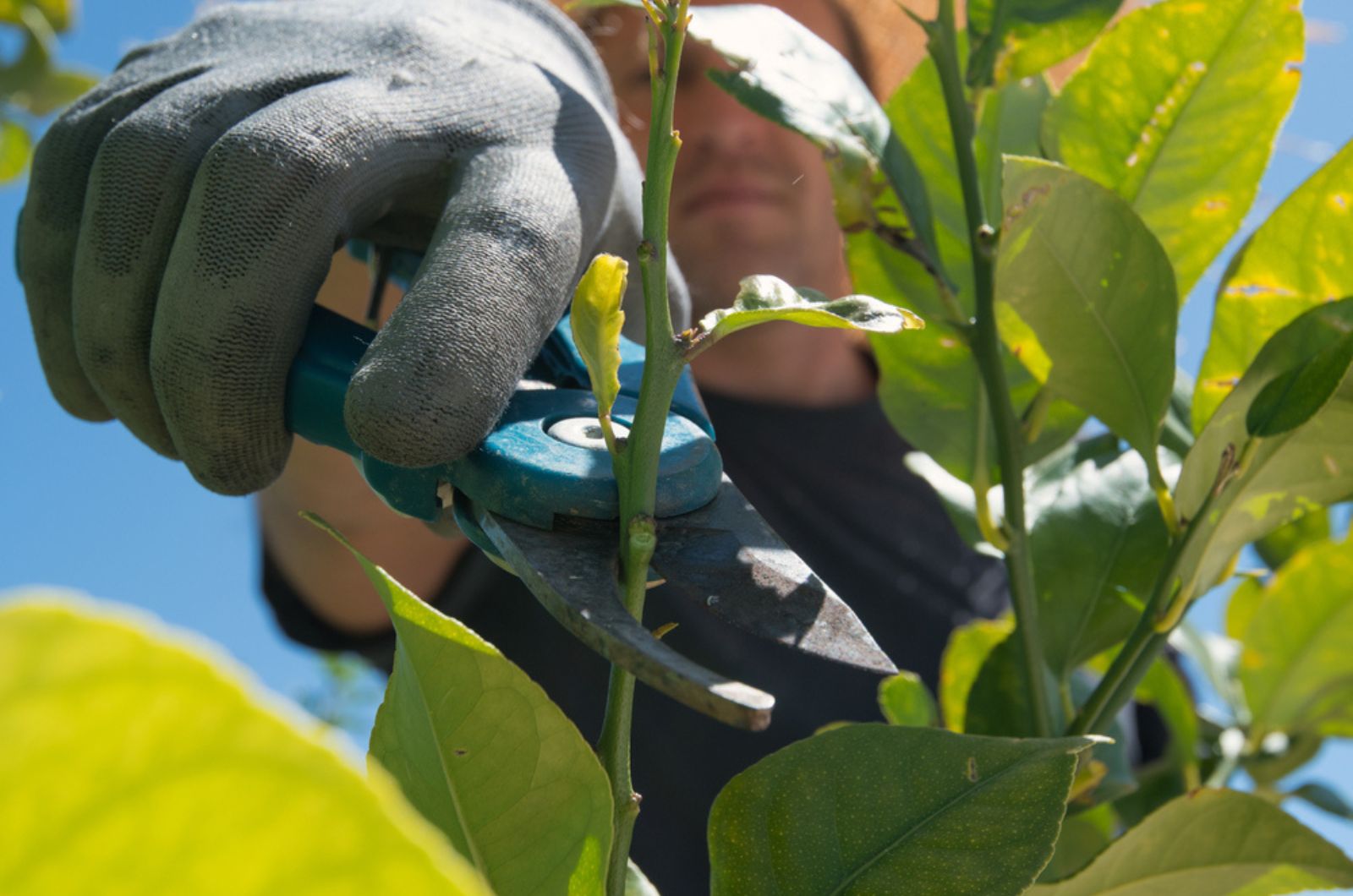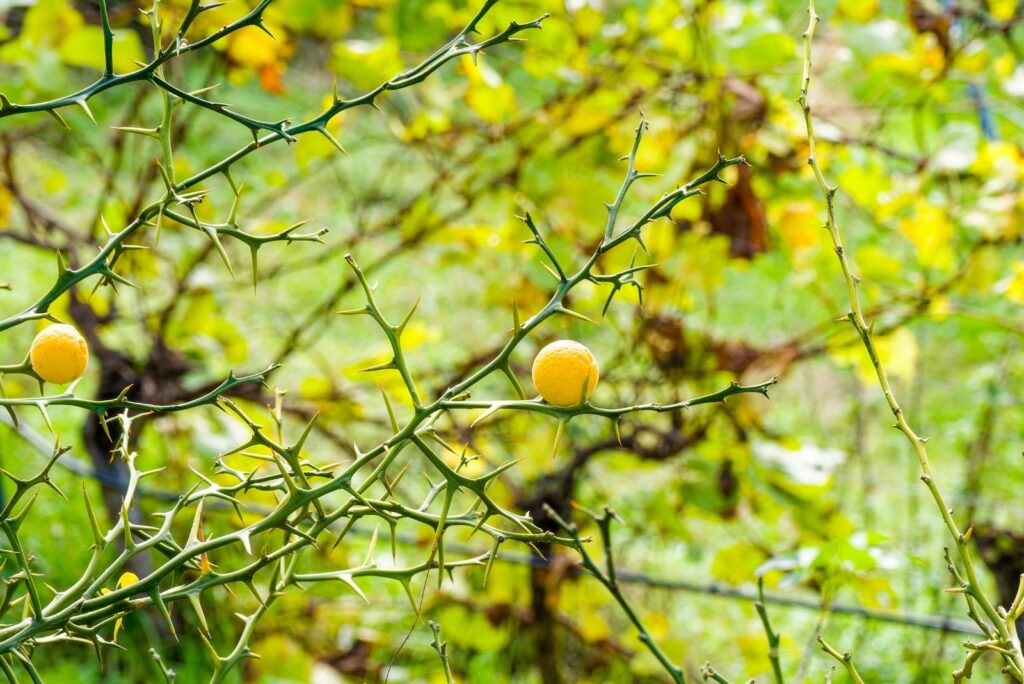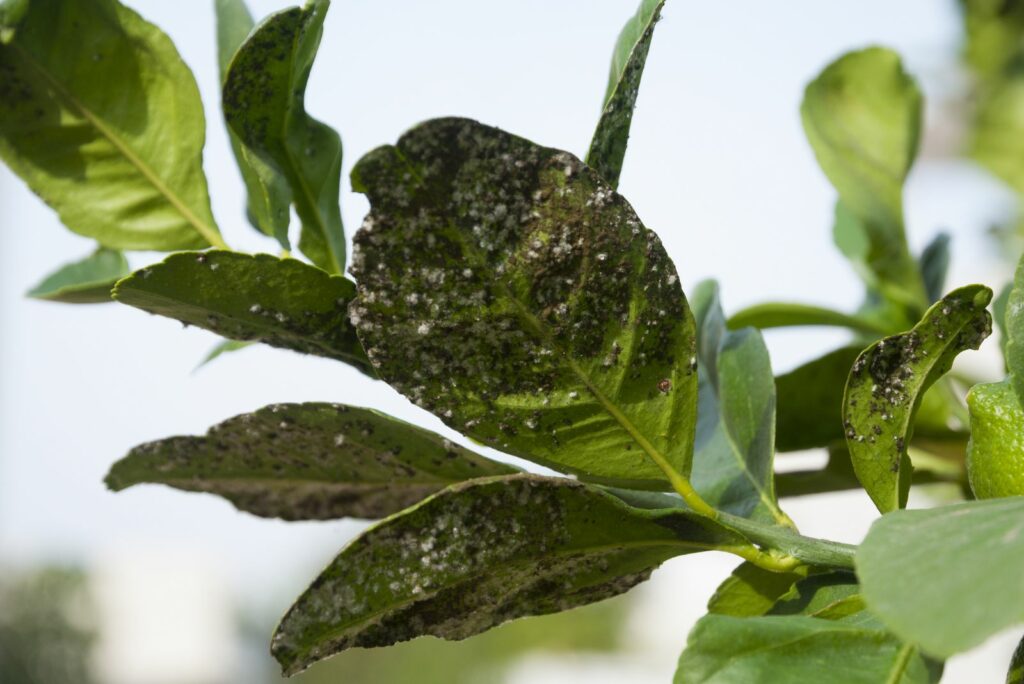Pruning is an unavoidable part of gardening, whether you have flowers, vegetables, or fruit trees.
And when it comes to lemon trees, it ensures you have a large harvest and a healthy tree that will produce fruits year after year.
However, you can’t just snip off branches without a plan. There are some guidelines you should follow and mistakes to avoid in order to get the best possible result.
Here they are!
1. Trim Them After Harvest
The first thing you should be aware of when pruning lemon trees is that you should do it immediately after harvest.
Flower buds which turn into lemons the following years form shortly after picking the fruit, and you should prune your tree before that happens or you’ll end up with no lemons the next season.
And pruning time really depends on the variety. Some lemon trees are ready for harvest in the summer, while others ripen in winter or spring.
2. Prune Branches Back To The Collar
If your lemon tree has overgrown and you want to reduce its size, you should cut the long branches all the way to the collar – a slightly swollen part of the limb located near the trunk.
This will allow your tree to heal quickly. If you make a cut closer to the trunk than this, or further away, the wound will heal more slowly, putting your tree at risk of getting an infection or pest infestation.
3. Apply The 3-Cut Method On Long Branches
A common mistake to avoid when pruning trees and shrubs is removing large branches in a single cut. This will make it break and peel the bark, causing great harm to your tree.
Instead, apply the 3-cut method. Make the first incision on the bottom side and about 1/3 deep and 1-2 feet away from the spot where it connects to another branch or trunk.
The second incision should be a little further out than the first one. And in the last one, you just need to remove the stump.
Here are some tips that can help you out:
4. Prune Unhealthy Wood
Dead and diseased branches are a breeding ground for pests and diseases, which is why you should remove them as soon as you notice them.
Monitor your trees frequently, especially after harsh winds and storms, which can break the limbs.
Additionally, frost damage isn’t uncommon and cold can damage the inner tissue of the plant, causing the vegetation to turn brown or black. (1)
If this happens, prune the limbs damaged by frost all the way to the healthy wood or the part with healthy leaves.
Finally, branches infested with pests or infected by disease are far less common, but they can occur. You should remove them and treat the tree with organic pesticide and fungicide (or whatever the cure for the disease that has afflicted your lemon tree is).
5. Chop Off The Shoots Around The Trunk
Fast-growing sprouts appearing around the lemon tree trunk may look impressive and give you hope for more fruits in the following seasons.
However, they are usually water sprouts or suckers and won’t bear any fruit. Therefore, you should remove them before they turn woody and deplete your tree of nutrients, moisture, and energy.
While they’re young, you can easily pluck them by hand, while you will need pruners to remove the woody ones.
Note: Young trees produce more suckers than older ones, so monitor them frequently and remove the water sprouts as they appear.
6. Shape The Tree Into A Dome (If You Want)
You can prune your lemon tree into a dome if you want it to be more attractive, but that’s certainly not a must.
If you want to control its size and shape it, keep it around 7-10 feet tall and 10-15 feet wide. This will make the harvest and any future pruning a breeze.
Additionally, if you have an overgrown lemon tree and want to reduce its size drastically, don’t do it all at once. Instead, remove about a foot of growth once a year for several years.
This method will prevent it from going into shock, will keep it healthy, and won’t dramatically reduce your yield.
7. Prune Lemon Trees Every Year
Once you understand the lemon tree growing stages, you’ll know that you shouldn’t prune newly planted trees, or at least you should do it very rarely.
But once your lemon tree establishes and starts producing fruit, you should trim it every year, right after harvest.
Small cuts made every year won’t result in a smaller yield, in fact they’ll increase it. But if you neglect this chore and only prune your lemon tree every couple of years, you’ll need to do some heavy pruning and remove larger branches. This will reduce your yield the following season.
8. Protect The Exposed Wood From Sunlight
Sunburns are common in young trees, which have a thin bark and cannot handle the direct and hot sunlight. However, even older trees can suffer from sunburns after pruning when branches become more exposed to sunlight. (2)
If there are no leaves to protect the exposed bark, you can apply a mixture of white interior latex diluted to half-strength with water.
Just make sure that it is not oil-based and your trees will be safe from sunburn.
Can You Remove Thorns On Lemon Trees?
Yes, you can safely remove thorns from lemon trees and it won’t affect their growth. However, there are many lemon tree varieties out there. So, if you want to reduce the amount of work you have to do, just get a delicious and thornless cultivar, such as ‘Eureka.’
Can You Save A Dying Lemon Tree By Pruning It?
It really depends on the disease that’s killing your tree. If root rot, for instance, is the cause of your lemon tree dying, pruning the branches won’t do much good. You have to remove the diseased roots, and that could be an issue with a full-grown tree.
But if an infection is attacking the leaves and branches (such as mold or blight), you can remove the infected branches to slow down or completely stop the spread of disease.
References:
1. Zekri, M. et. al. (2019). Freeze Damage Symptoms and Recovery for Citrus. UF IFAS Extension.
2. Perry, E. (2020). Protect Trees from Sunburn. UC ANR: The Stanislaus Sprout.

